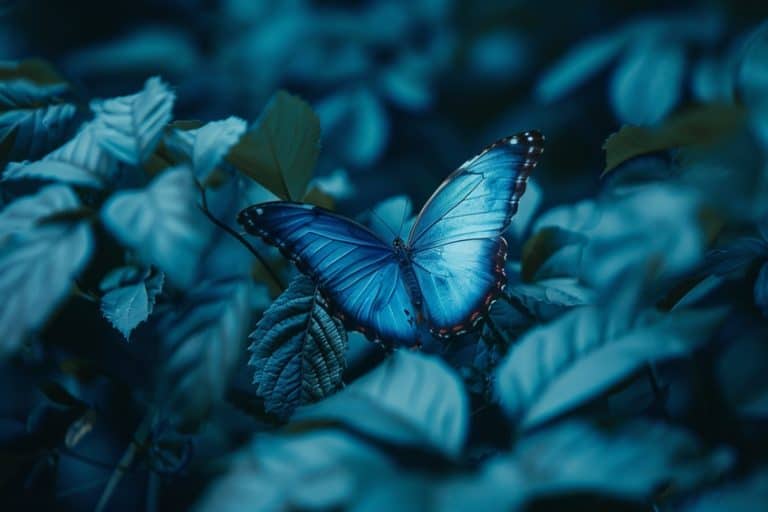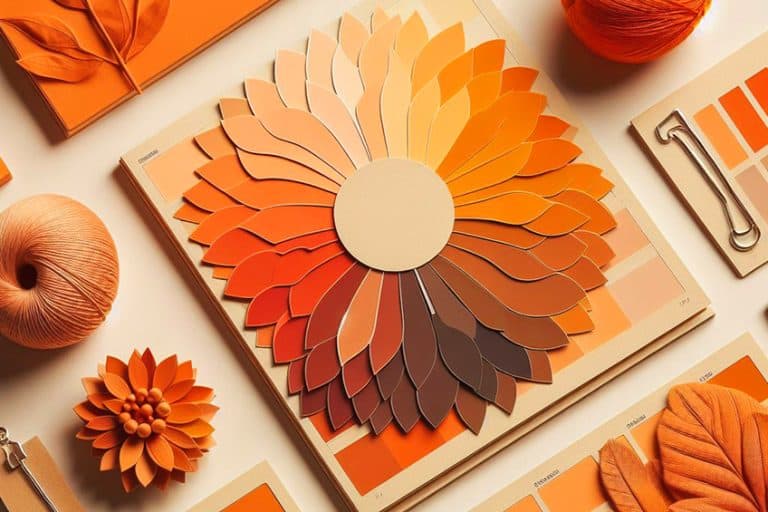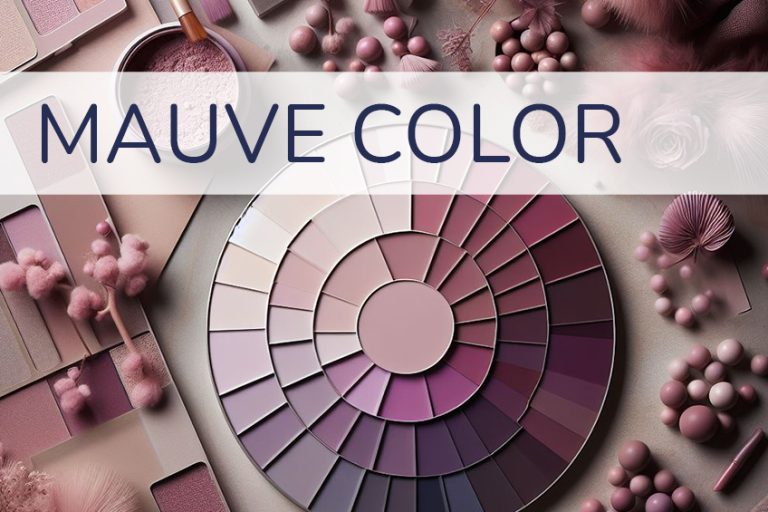How Many Colors Are in the World? – Endless Shades of Colors
For most of us, color is all around us, and we may take for granted just how important colors are in our lives. In all likelihood, you have probably not thought about how many colors exist. This is quite a complex question to ask, as there are various factors to take into account. Chances are that the colors you are seeing at this moment might be slightly different to the next person. To get an idea of how many colors are in the world, let us discuss the topic in a little more detail below!
How Many Colors Are in the World?
To summarize, scientists have determined that the number of colors is about 10 million. The way we classify colors is determined by cultural and biological factors. However, this is only an estimate, as everyone perceives color differently, so there might be an infinite number of colors. Seeing colors is thanks to our brain, eyes, and how the visible light waves reflect off objects.
How Many Colors Exist?
In general, most of us only consider the basic colors, which can be seen in the rainbow, and include red, orange, yellow, green, blue, indigo, and violet (ROYGBIV). However, these are only a tiny part of all the colors in the world. Researchers have determined that there are 10 million colors that are visible to the naked eye. This is because most people perceive colors differently, from cultural differences to men and women having different color perceptions. The color of an object can also change throughout the day, as the light shifts. Even artificial lighting can affect the way we perceive color.
There may even be an entire world of colors we cannot even see, so it could involve an infinite number of colors. To provide an exact answer as to how many colors are in the world is not possible.
However, an estimate of how many colors the human eye can see can be determined. You can start with the main colors as we have mentioned above, but from these, there are many different variations or shades. According to researchers, we can see about one thousand shades of light. Within that, there are 100 levels of yellow-blue and red-green shades.

Take all this and you can come up with an equation of 1000 shades multiplied twice by 100, which produces 10 million. However, this is only an approximate amount, as each color can be perceived differently by each person. There are even more varieties of each color, which could then reach an estimate of about 18 decillion, which involves a lot of zeroes. Today, a computer screen can display over 15 million different colors to create a single full-color image.
How Many Colors Are Displayed on a Computer Screen?
Today, you can take the primary colors of the RGB color model, which represents colored light, and you can mathematically determine how many colors you can get. When you combine these primary colors, you can get a variety of new hues. Each primary hue has a color value from zero to 255. There are also 256 variations of each color available. An image of color is represented by bit depth, which can range from eight to 24.
The 24-bit consists of eight bits each of the color’s red, green, and blue.
So, the total number of colors involved is estimated at over 16 million. Some newer technology may even provide over a billion colors. However, it will be impossible to distinguish between all of these colors. If we define colors as a perception, many of these colors will simply look the same. At most, it might be possible to only see a few million colors.

Is there a difference between all the “bits” of color? We suppose that they do, otherwise, why create them? The color bit depths all include the usual red, green, and blue colors. However, the difference involves the number of combinations possible and the alpha channels. Alpha channels are what control the opacity and transparency of a hue.
16-Bit Color
This offers high color on monitors and computer screens and can display over 60,000 hues. This is okay for most people working on a computer. However, for those who love to play computer games, which involve complicated graphics, higher color depths are needed.
24-Bit Color
This depth of color is also known as “true color”, and here the display screens can offer over 16 million different color combinations. This offers smoother and higher resolution and offers a greater dynamic range.
32-Bit Color
When dealing with this bit depth, it also supports just over 16 million colors. However, it also uses an alpha channel that creates more shadows, gradients, and transparencies. So, it can create over four million color combinations. As you increase the colors or bit depth, more memory is required. However, most computers now have a video card that will support a 32-bit system. Older computers might only be able to support the 16-bit system. However, most people will not even be able to tell the difference unless the graphics require special visual effects.
One of the benefits many say they experience from using higher color depth includes being less strenuous on the eyes.
Why a Color Does Not Need to Have a Name
Only a tiny percentage of colors have a name. This is because many different hues might be considered the same color. Colors are also mostly given names because they define an object or are associated with various concepts or ideas. Many cultures or languages assign more names to colors than others. This does not mean they see more colors; it just means they name colors that have more significance to them. Different cultures also recognize different basic colors. For example, in the Western world, we accept colors that include red, yellow, blue, orange, purple, and green. However, in other cultures and languages, there might be fewer recognized colors. We might see blue and violet as separate colors, but in other cultures, these colors might be considered the same. Maybe some do not have a word to describe an orange and use another color to describe it.
This does not mean that people do not see the same colors, it just means that the personal significance of a color can vary. For example, you might see the color of the ocean as blue, however, in other cultures or languages, this is not significant, and the ocean is described in a completely different way.
The way we communicate or talk about color is how we physically understand or make sense of colors. Added to this, there can also be differences in individual biology, so each person might see color differently. So, even though there is seemingly an infinite number of colors, we end up classifying only a few according to our cultural and biological considerations. Today, you can find any number of colors on your computer, each of them having an identifying hex code and some possess color names. However, in many cases, the color differences are so small that they will be associated with another similar color and will not have a unique name of their own. So, many colors do not have color names but are considered separate colors. Color names have been recorded for many years, for example, in the Dictionary of Color (1930) by Maerz and Paul. Here you will find many color names and explanations.

There are also many other books from around the world that focus on colors. For example, the Universal Language and Dictionary of Names (1965), was published by the United States Bureau of Standards. This is where Crayola gets its names for its products. Many of the crayon names are also taken from artist paints, while other names are provided by consumers in various promotions. Pantone is another color expert and has developed their own color system that many follow today. They come up with a “color of the year” that has a major influence on fashion and design worldwide. The company aims to provide a universal color language that anybody around the world can refer to.
Many paint manufacturers also mix and create colors that they name.
The Science Behind All the Colors in the World
Most of the color that surrounds us are not really colors at all, but how our brain perceives color. Most objects do not possess color but are reflections of different color wavelengths. When light shines on an object, there are light waves that are absorbed and others are reflected, which is what reaches the eye. The visible color spectrum ranges between red light and ultraviolet light. Typically, these wavelengths can be measured between 700 and 380 nanometers. Red is seen as having the longest wavelength, while violet is the shortest. Green, on the other hand, is the color we see the easiest since it is positioned somewhere in the middle of the light spectrum. The reflected light from the object will enter the eye through the cornea, which will then turn the light toward the pupil. The pupil helps to control the amount of light that passes through, which is less the brighter it is and more the darker it is. The light then hits the lens, which then concentrates the light onto the retina, which holds nerve cells.
Here you will find what are known as rods and cones, which are light-sensitive and are also called photoreceptors. The rods detect the presence of light, while the cones are activated by the different color wavelengths. So, the cones are what detect colors. These nerve cells then send an electrical signal to the optic nerve. The optic nerve is what takes the signal to the brain, where the color is interpreted.
The cones that detect colors are typically sensitive to three colors that include red, green, and blue. So, biologically, there are three colors; any other color is how our brain interprets the information sent to it. Let us use an example, such as the yellow lemon color. When you see the lemon in bright light, both the red cones and the green cones are activated. This signal is transmitted to the brain, which then interprets the color as yellow. So, you do not actually see yellow, it is simply a combination of red and green that the brain translates as yellow. Online graphic designs and television screens use this to create what you think is a particular color. We will be using a pure yellow for this example. When you are looking at your laptop screen, you are not technically looking at the color yellow. As you can see in the table, the yellow is created by layering equal amounts of red and green light. This creates an almost pure color and from this, you can also get a variety of different shades and tones of the same color.

| Shade | Hex Code | CMYK Color Code (%) | RGB Color Code | Color |
| Yellow | #ffff00 | 0, 0, 100, 0 | 255, 255, 0 |
The rods and cones have varying degrees of response, which is where the many different shades of color come in. So, you might only be responding to three primary colors, but thanks to how the brain works, you can see a myriad of different colors.
Based on science and how the eye can perceive the different shades of color, most researchers are happy to say that there are about 10 million colors in the world. However, due to colors being subjective because of how differently we perceive colors, you can also say that there are an infinite number of colors in the world. So, you can narrow how many colors exist down to perspective. Whatever your view is, take a moment and simply enjoy the ability to see colors.
Frequently Asked Questions
How Many Colors Exist?
There are a few answers to this question. Scientists have determined that there are about 10 million colors, however, due to the different ways everyone sees color, it can be an infinite number of colors. On computer screens, there are over 16 million color combinations, but most of these we cannot differentiate from one another.
What Are the Essential Colors?
The main colors are those found in the rainbow and include violet, indigo, blue, green, yellow, orange, and red. Each of these colors forms part of the visible light spectrum and has different wavelengths. Violet is the shortest, while red is the longest wavelength, meaning that violet is more visible to the eye as opposed to red.
How Do Dogs See Color?
Dogs do not see colors the same as humans, but they can still see some colors nevertheless. Humans have three kinds of cones in the retina, while dogs only have two cones. This means that they can only perceive blue and yellow. So, dogs are slightly color blind, as they cannot see red-green.
In 2005, Charlene completed her Wellness Diplomas in Therapeutic Aromatherapy and Reflexology from the International School of Reflexology and Meridian Therapy. She worked for a company offering corporate wellness programs for a couple of years, before opening up her own therapy practice. It was in 2015 that a friend, who was a digital marketer, asked her to join her company as a content creator, and this is where she found her excitement for writing.
Since joining the content writing world, she has gained a lot of experience over the years writing on a diverse selection of topics, from beauty, health, wellness, travel, and more. Due to various circumstances, she had to close her therapy practice and is now a full-time freelance writer. Being a creative person, she could not pass up the opportunity to contribute to the Art in Context team, where is was in her element, writing about a variety of art and craft topics. Contributing articles for over three years now, her knowledge in this area has grown, and she has gotten to explore her creativity and improve her research and writing skills.
Charlene Lewis has been working for artincontext.org since the relaunch in 2020. She is an experienced writer and mainly focuses on the topics of color theory, painting and drawing.
Learn more about Charlene Lewis and the Art in Context Team.
Cite this Article
Charlene, Lewis, “How Many Colors Are in the World? – Endless Shades of Colors.” Art in Context. November 20, 2023. URL: https://artincontext.org/how-many-colors-are-in-the-world/
Lewis, C. (2023, 20 November). How Many Colors Are in the World? – Endless Shades of Colors. Art in Context. https://artincontext.org/how-many-colors-are-in-the-world/
Lewis, Charlene. “How Many Colors Are in the World? – Endless Shades of Colors.” Art in Context, November 20, 2023. https://artincontext.org/how-many-colors-are-in-the-world/.









